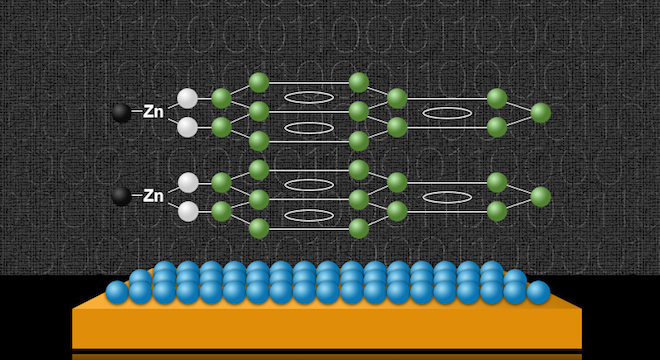The challenge of packing more memory into ever-smaller digital devices is no small feat, but a group of international scientists led by researchers at MIT may have achieved enormous progress.
On Wednesday, the team revealed they had successfully tested a way to store data on individual molecules at room temperature, paving the way for a 1,000-fold improvement in storage density, over the current limits of 1 terabyte-per-square inch.
The method was demonstrated on a new type of “supramolecule,” which was created from binding atoms of two different molecules: fragments of graphene — a wonder material consisting of thin sheets of carbon atoms — attached to zinc atoms.
“Each molecule is around 1 nanometer in dimension and hence this will let us achieve storage as high as 1000 Terabyte per square inch,” wrote Jagadeesh Moodera, senior research scientist at MIT’s Department of Physics and the director of the lab where the new method was pioneered, in an email to TPM.
“The idea here is to be able to have more and more information available in your portable pocket device,” wrote Karthik Raman, the lead author of a paper on the advance published online in the journal Nature wednesday, in an email to TPM. “Hence if such a work can make it to technology, with the existing size of our portable device we can store 1000 times more information in the form of documents or music or high quality video files.”
The molecular memory method only works at temperatures most people would consider far too cold to be doing much of anything in — around negative 9 Fahrenheit. That’s still considered “room temperature” in physics, however, especially compared to previous molecular memory storage research, where the effect was only achieved at much colder temperatures, near absolute zero, or -459.67 Fahrenheit.
“Fabrication challenges exist in scaling this work for technology and above room temperature operations need to be demonstrated,” Moodera explained. “However, our work shows that above room temperature operations can be demonstrated by materials innovation.”
The supramolecule, for example, was assembled by the Indian Institute of Science Education and Research in Kolkata and the storage method was then developed and tested by MIT researchers and other scientists at several German institutes.
In order to get the molecules to store binary data, MIT scientists took them and sandwiched them between two electrodes and, later, in an unexpected advance — just one electrode, and they still worked.
The electrodes were used to change the conductivity of the molecules between two states, representing the 1 and 0 of binary code, the basis for all computer memory. But researchers didn’t expect to find that even when they used just one electrode, it was still capable of switching the conductivity between the two states.
The scientists have some theories as to how the change in states could occur with just one electrode, but they’re still working on refining them.
That understanding is necessary because there’s still one other major hurdle preventing the molecular memory method from getting into devices and therefore consumers’ hands anytime soon. The change between the two levels of conductivity is only a 20 percent difference, much less than what would be necessary for reliable magnetic storage in larger volumes.
“In order to have a good signal at low power and faster information readout the bigger the percent change the better,” Moodera told TPM. “For example, 50 percent change is much better than, say, 10 percent change.”
“The change in conductivity is important in order to read the state of the molecule,” Raman added.
So it will likely be several more years at the earliest before the molecular memory method can be commercialized, according to Moodera and Raman.
“This topic is at a very nascent stage of research,” Raman explained. “But we hope that after our work many researchers will focus their interest in using molecules and good progress may happen in few years down the line.”
Eventually, the researchers believe that their work could help lead to quantum computing and quantum bit memory (Qubits).
Raman, who was a PhD student at MIT when the molecular method was successfully tested, is now a scientist at IBM’s Research Lab in India. He told TPM that while IBM was pursuing its own molecular memory research and development, MIT’s work was clearly in the lead and the institute has a patent pending.
“So far no commercial companies have contacted us,” Raman said. “However we would definitely be interested in companies contacting us to work on some of the challenges in commercialization of this idea.”
The research was sponsored by the Office of Naval Research and by the National Science Foundation, who simply want to see research breakthroughs from their funding, according to Raman.






